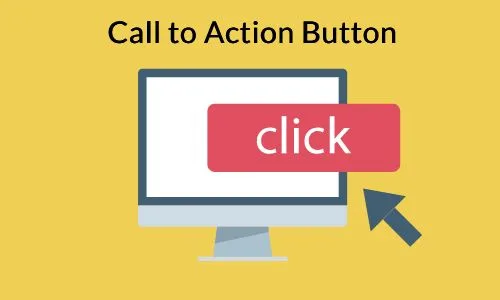Common Web Design Mistakes , Being the owner of a small business makes your website the chief hub of your company. And it comprises the most essential part of your branding and marketing tactics.
Prospective customers specifically visit your website for its content. Which comprises its website design, its total appearance and usability to help in the ongoing success of the company. But if the Web Designer does it in the wrong manner. It will create a negative impact on your business.
5 Common Web Design mistakes
Here is the list of 5 common web design mistake that you must keep away from to build a great user experience and let your business prosper substantially.
1. Common Web Design Mistakes – Poor Navigation
Usually a lot of small businesses fail to make navigation in the right manner. Hence without cautious attention to how visitors will navigate on your site. You might create a frustrating experience for your potential customers. Visitors visit your site in search of some useful information. And if they do not find it they will quickly go somewhere else. Having an impression that your business is equally disorganize, just like its website.
A perfect navigation strategy should be flawless and effective enough to keep the visitors on it for a longer duration. Which signifies more potential leads which is your primary objective.
Proper navigation affects both usability and accessibility. So it’s crucial to make it a main concern. Usually web designers use most common navigational strategies that are expect by the regular visitor. The pages and its sequence of the website should made in easy and logical manner enabling the visitors to maneuver. The navigation should be effortless and natural so that the visitor doesn’t need to think about how to navigate your site.
There are quite a lot of principles you can chase to create a successful navigation structure.
- Use suitable icons to assist navigation. Icons are very appealing and at the same time easy to use and understand.
- Organize logical groups of inter related links. With the most important links at the top-level navigation bar and functional (dashboard, account, settings, etc.) and legal (copyright, privacy, terms) located elsewhere.
- Provide a sitemap so that users know where they are on any particular page. So that the visitor knows exactly how to proceed to another area of the website. It can implement by using Breadcrumb navigation.
2. No Clear Calls To Action

Another main error made by most small business websites is that they lack of a clear call to action. Am sure you must have come across a small-business brochure websites which consists nothing but endless descriptive paragraphs. If you fail to direct users to commit to an action for example buy a product, contact you or subscribe, then you are losing them.
Getting traffic on to your website is no doubt very important. But it is useless if your main call to action is a plain “click here” link hidden in a deep ocean of text. Call-to-action icons are the perfect way to grab the visitor’s attention, which can surely result in high conversions. This requires investing time and thoughtfulness into building a successful call to action which can in turn help guide users and attend to their needs while achieving your own business goals.
It’s imperative to keep the following best practices in mind when creating a finest call to action:
- A web designer plays a crucial role in the design of a call to action. Which can broken down into 4 simple elements – shape size, position and color. Every small detail plays a vital role in shaping how effective the call to action is in directing the user.
- Don’t give a chance to your users to think or else they’ll leave. Visitors are generally in search of information quickly and don’t want to spend unnecessary time searching for it.
- You must not have multiple calls to action on every page. First decide your primary objective for each page and then target it accordingly. Your content ought to answer, “What’s in it for me?” and your call to action should now answer, “What do I do now?”
3. Color & Contrast
Color and contrast aren’t high up on the list of priorities things for small business owners when they are creating their own website. Whereas it should pay attention on as if your website text does not contain adequate contrast balance to its background. People will have trouble in reading your content, particularly people with poor vision or color-blindness.
Other than the readability factor, color and contrast is also important as it generates visual interest and attracts the interest of the user. It is also of great help in effectively organizing and defining the flow of hierarchy of each and every page. And therefore is an essential part of a Website Design and proper attention is require by a web designer during the design process. Here are few tricks:
- Use a free Color Contrast tool (which are of accepted standards). Which easily check to see how the contrast on your website blend together.
- Look out for other major sites, how they use color and contrast to enhance their readability and enlighten specific sections. And experiments that they make with color schemes.
- The best trick is to use different sizes between elements, making some things appear larger than others. This works best with minimal color scheme and not specifically on color.
4. Content, Content, Content
Visitors come on your website in search of informative content. And the way it is structured is the prime factor where its success relies upon. Unfortunately most of the small businesses ignores this factor and concentrates on only overloading the user with information and overlook the overall presentation.
Generally people do not read through the entire article until and unless it is very necessary. They just have a glance at the information and quickly get to the points of interest. Therefore it’s so significant to generate a strong visual content hierarchy so that your visitors can quickly scan through the relevant content. This way you will help in creating a more enjoyable user experience for your visitors.
Don’t forget to keep in mind these three tips when focusing on your content:
- White space is perhaps the most vital factor to think about. It will permit the user to focus on the important content within each section.
- Fragment lengthy portions of information into digestible blocks of text, utilizing headings, sub-headings, bullets, block quotes and paragraphs.
- Readable content is essential, so use a good line height that is huge enough to make content scan able. Margins and letter spacing also need to be taken into consideration.
- When talking about content, spelling and grammar cannot be taken too lightly.
5. Common Web Design Mistakes – Clutter
Usually it is seen that small business owners generally stuff as much as they can on a single page. Which results in a busy, cluttered and untidy page.
The more irrelevant items are there on your web page, the more it makes it look unprofessional. Which makes the user feel confused and distracted. A cluttered website directly affects the potential traffic. Because your visitor will not wish to return back if they once return with a bad experience. This leads to low traffic, a towering bounce rate and probably a poor Page Rank.
Clutter also can be with the images. Too many images can be really annoying and a huge distraction to the users. Images should be used in context to illustrate, confine attention and direct the user where required.
Follow these guidelines for a smoother visitor experience:
- Challenge every item on each page and ask, “Does it really need to be there? Does it serve a specific purpose? Can I live without it?”
- The solution is to help the visitor in finding the information they’re looking for. So take care to differentiate among areas of content, advertisements and promotions.
- Prioritize your content and come to a decision what is the most important to your visitor and potential customer – and trade it well.
Even the best content cannot be made effective if its lost in a muddle of words and graphics, therefore de-cluttering is essential.
These are just five website design mistakes that many small businesses commit in the process of Web Development. What other mistakes have you observed on small business websites?



